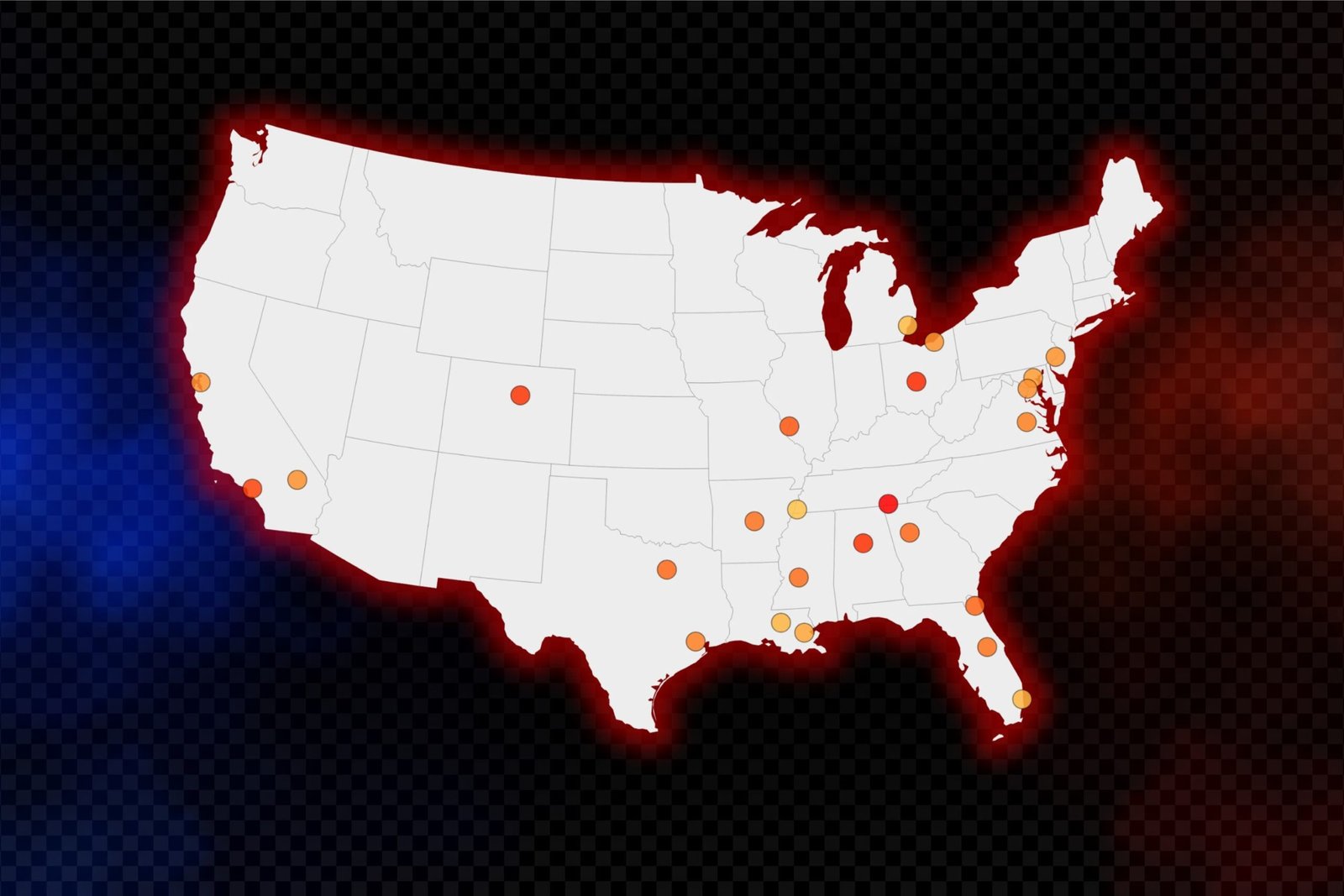People think of Europe as a very safe place. They imagine historic cities with low crime. But the reality is some European cities have high crime problems an these problems affect the daily life of citizens.
Crime data helps us understand where safety is a bigger worry. This data is important for people who live in these cities. It is also important for people who want to visit.
The crime index uses a scale of 0 to 100. Higher numbers mean more crime worry.
Numbeo collected this information. They ask citizens in these cities about their sense of security. They ask about different types of crime.
This report is from August 2025. It shows the top 10 cities where citizens report the highest levels of crime.
1. Bradford: 67.1
Bradford is a city in the north of England. It started as a small Saxon settlement. It grew very fast in the 1800s. This happened because of the huge growth of the wool trade. Bradford became the “wool capital of the world.”
The city saw a lot of industrial growth. This growth brought in many workers. It led to the development of impressive Victorian architecture. Today, the economy has changed. It now includes finance, engineering, and media.
Bradford has the highest score on this crime index. This means citizens feel the most worry about crime here. The city continues to work on improving safety for everyone.
2. Marseille: 65.3
Marseille is a major port city in France. Greeks founded it around 600 BC as Massalia. This makes it one of the oldest cities in Europe. It was a key trading center for centuries.
The city has a long history of independence. Its natural harbor helped it become a premier maritime trading hub. The city grew bigger with the French Empire in the 19th century.
Today, Marseille is a large city with a busy port. It has a complex history and a diverse population. Citizens report a high level of concern about crime in the city.
3. Coventry: 65
Coventry is in the West Midlands of England. In the Middle Ages, it became a major city. It was famous for its cloth and textiles trade. The city’s growth slowed, but new industries brought it back.
The city became a center for ribbon-weaving and watch-making. Later, it became famous for making bicycles and cars. This industrial past made Coventry an important British city.
German bombing heavily damaged the city during World War II. It rebuilt itself and continued its industrial life. Citizens now show a high level of worry about crime and safety.
4. Birmingham: 64.4
Birmingham is a large city in the West Midlands of England. It started as a small Anglo-Saxon hamlet in the 7th century. It grew into a market town by the 12th century. It later became known for its trade and metalwork.
The city became a key player in the Industrial Revolution. It had many canals and a reputation for inventions. It grew very fast in the 19th century. This made it a huge manufacturing and industrial center.
Birmingham is now the UK’s second-largest city. It is a major hub for business, culture, and finance. Despite this modern growth, citizens report significant worry about crime.
5. Naples: 62.8
Naples is an ancient city in Italy. Greeks founded it in the first millennium BC. It is one of the oldest places in the world that people still live in. The city was a major center for Greek culture.
The Romans later conquered the city. It kept its Greek language and customs. Naples then became part of different kingdoms. By the 17th century, it was one of the largest cities in Europe.
Naples is famous for its history, art, and food. The city center is a UNESCO World Heritage Site. However, citizens express a high degree of concern about crime and safety here.
6. Grenoble: 61.2
Grenoble is a city in the French Alps. It started over 2,000 years ago as a small Gallic village. It was first known as Cularo. The Roman Emperor Gratian renamed it Gratianopolis.
The city became the capital of a region called the Dauphiné. This helped its economy grow. It became known for its glove industry. Later, it led the way in hydro-electric power.
Grenoble is now a major center for science, technology, and research. It hosted the Winter Olympics in 1968. Citizens report high levels of concern about crime in this important technology hub.
7. Montpellier: 61.1
Montpellier is in southern France, near the Mediterranean Sea. It started in the late 10th century. It grew quickly under the local Guilhem family. It became an important trading post for spices and goods.
The city later became part of the Kingdom of Aragon. The University of Montpellier, established in 1220, is one of the oldest in the world. It has the oldest medical school that still works.
Montpellier became known for its intellectual life. It saw periods of conflict during religious wars. Today, it is a fast-growing city. Its citizens show significant concern about crime issues.
8. Liège: 60.7
Liège is a major city in eastern Belgium. It sits on the Meuse river. It started as a town when a bishop moved his center here in 721 AD. It became a center of learning in the Middle Ages.
Liège became a powerful prince-bishopric. This meant a bishop ruled the area. It was known for its important metal and textile industries. It later became a major center for making arms.
The city was a key industrial hub in the 19th century, especially for steel. It suffered damage in both World Wars. Citizens now report a high crime index in this historic industrial city.
9. Nantes: 58.5
Nantes is a port city in western France. It sits on the Loire River. It was a port in Roman times. It later became an important city for the Dukes of Brittany.
During the 18th century, Nantes became France’s largest port. It was a major center for the French Atlantic slave trade. This made the city very wealthy.
The city’s economy suffered during the French Revolution. It later grew again with new industries like shipbuilding. Nantes now focuses on a service economy. Citizens express worry about crime.
10. Paris: 58.1
Paris is the capital city of France. The Gaulish Parisii tribe founded it around 250 BC. It grew from a small settlement on an island in the Seine River. It became an important Roman city called Lutetia.
Paris became the capital of France in 508 AD. In the Middle Ages, it grew into a rich city. The city played a central role in the French Revolution and other key events.
Today, Paris is one of the world’s most famous cities. It is a global center for art, fashion, and culture. Despite its international fame, citizens report crime worries, placing it in the top 10.























